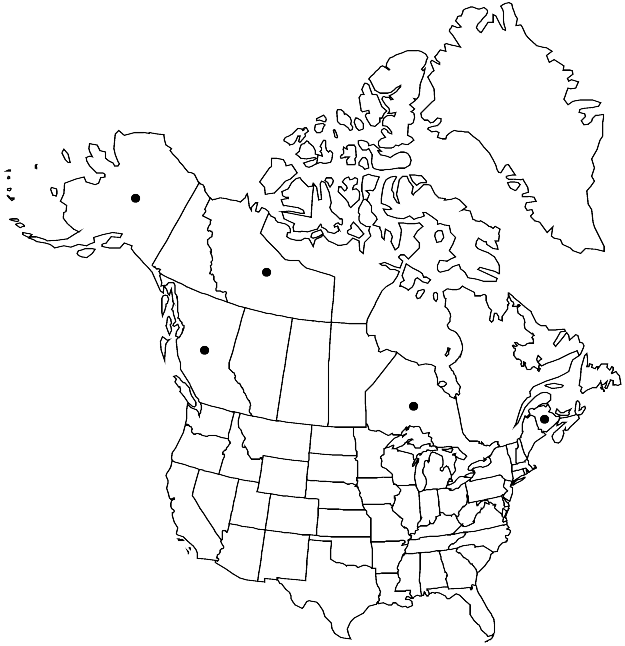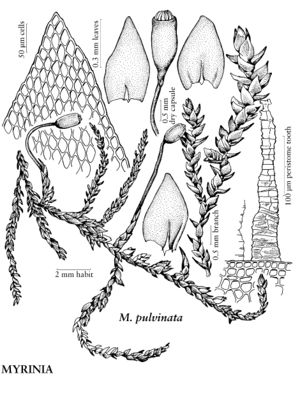Myrinia pulvinata
Syn. Musc. Eur., 483. 1860.
Illustrated
Basionym: Leskea pulvinata Wahlenberg Fl. Lapp., 369. 1812
Treatment appears in FNA Volume 28. Treatment on page 475.
Leaves oblong-ovate, 0.6–0.9 × 0.3–0.5 mm; apex rounded-obtuse to bluntly acute; proximal laminal cells 9–24 × 11–21 µm; medial and distal cells 22–34 × 11–13 µm. Seta 0.6–1 cm. Capsule 1.2–1.8 mm; exostome teeth triangular-lanceolate, 325–365 × 80–95 µm. Spores 14–20 µm.
Phenology: Capsules mature May–Aug.
Habitat: Areas submerged at flood level, base of trees or shrubs, willows, edges of ponds or stream valleys
Elevation: low to high elevations (0-1700 m)
Distribution
Loading map...

B.C., N.B., N.W.T., Ont., Alaska, Europe, Asia (nw Siberia).
Discussion
Myrinia pulvinata may be mistaken for species of Leskea because of similar habitat and leaf shape. Plants of Leskea generally have a much stronger costa as well as papillose laminal cells. When sporophytes are present, the cross striolate external exostome surface in Myrinia is distinctive. Myrinia pulvinata and Leskea polycarpa are often found growing intertwined.
Selected References
None.
Lower Taxa
None.
